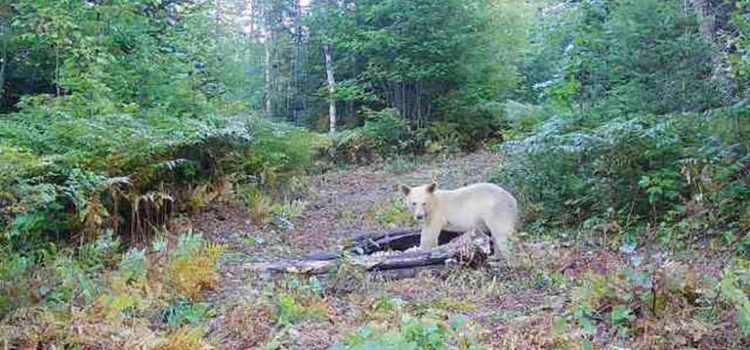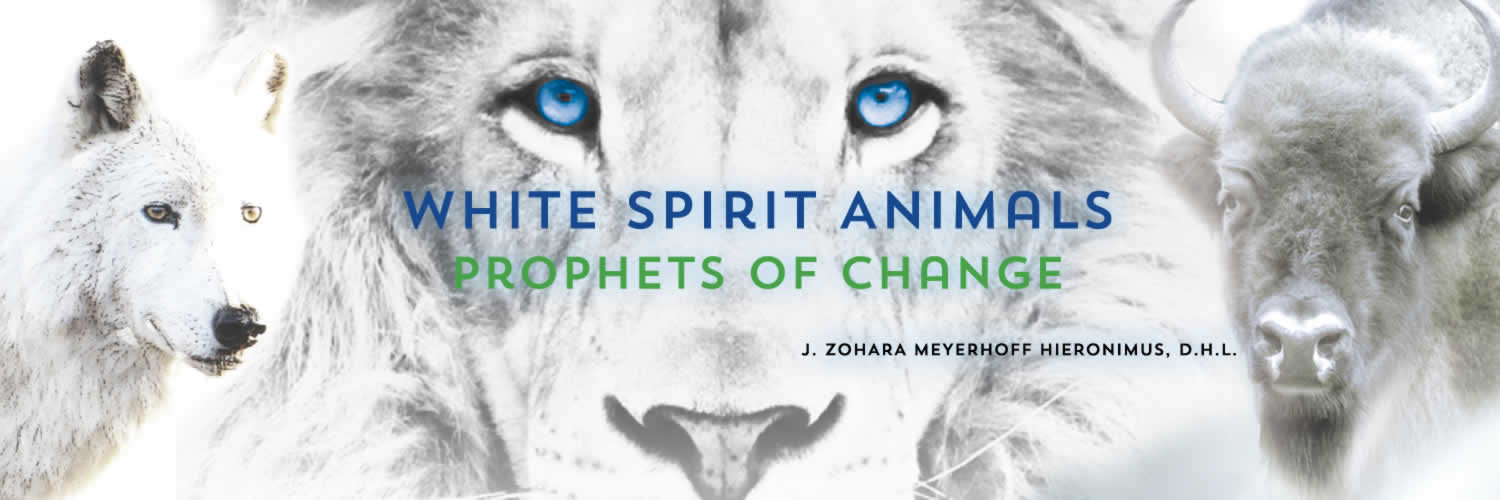
Ed Browne for Newsweek
A spirit bear has been spotted in Michigan for the first time. The one-in-a-million white-colored bear is considered a symbol of change for Indigenous peoples. Spirit bears are a type of black bear, but instead of dark fur they have white or cream-colored fur and nearly white claws. They are not polar bears or albinos; their coloring is down to a different genetic condition.
There are only about 100 spirit bears in the world, according to the North American Bear Center. Most of them live in a couple of islands along the coast of British Columbia in Canada: Princess Royal and Gribbell islands.
On the two islands, spirit bears are relatively common. They make up about 20 percent of the local population of their subspecies—the Kermode bear—with the rest being black.
The North American Bear Center states: “Outside British Columbia only about one in a million black bears is white.” This is because spirit bears’ coloration is due to a double recessive gene that only results in white fur if both parents contribute it to their offspring. In a limited gene pool the chances of this happening are much higher than if the animals are spread across a large area.
This month, however, a spirit bear was spotted on a trail camera in Michigan, almost 1,900 miles from the Canadian islands. The camera had been set up in the state’s Upper Peninsula ahead of the annual bear hunting season.
As seen in photos acquired by local news outlet MLive, the bear is almost completely white, with slightly brown fur around its head and neck. It appears to weigh about 100 pounds.
Photos of the bear were submitted to Michigan’s Department of Natural Resources after they were shared on social media.
The trail camera’s owner, described as a hunting guide, told MLive he initially thought the white coloring in the photos had been caused by a camera flash before realizing the bear was actually white.
He spoke on condition of anonymity, after receiving criticism from fellow hunters—who were concerned the photos would increase competition from outsiders—as well as anti-hunting advocates.
He added that he did not want to hunt the spirit bear or guide a client to it. “I was not going to let anybody shoot that bear,” he said.
Yet there is a still a risk the spirit bear will be killed by hunters this season as there are no particular legal protections for bears with white fur in Michigan.
Cody Norton, a wildlife biologist at the Michigan Department of Natural Resources, acknowledged this possibility, telling MLive: “If it did get harvested, we’d love to take a genetic sample and get to see if this is the same exact genetic mutation that is what is found in British Columbia in the remote bear population or if it’s something different.”
The spirit bear in Michigan is the first to be seen outside of British Columbia since 2004.
Spirit bears are culturally significant for Indigenous populations, featuring in songs, dances and storytelling.
Austin Ayres, wildlife technician with the Keweenaw Bay Indian Community Natural Resources Department in Michigan, told MLive: “It is a sign of great change.” The bear is also a sign that “everything is possible” within nature for populations such as the Anishinaabe peoples, he added.
